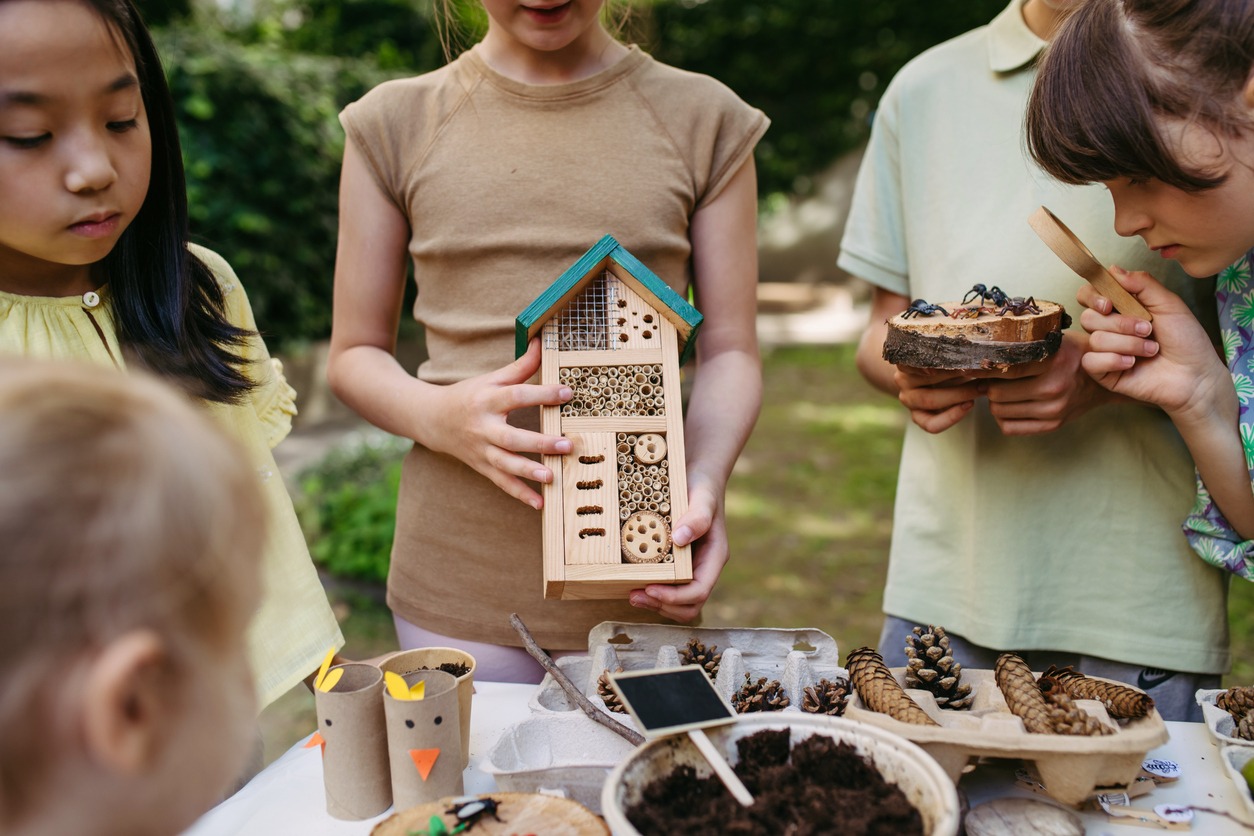Youngsters are naturally curious about the world around them. They love to ask questions about why certain occurrences happen here on planet Earth. That curiosity is an excellent opportunity to explain the environment through interactive eco-projects.
When you offer lessons about ecosystems, conservation and sustainability, you can make learning fun with hands-on activities. This approach gives students a greater connection to nature and lessons they will remember for a lifetime.
The Advantages of Educating Children About Nature
Introducing students to the natural world may be a great way to fill an afternoon, and it offers several benefits for their well-being. It builds empathy and scientific thinking by turning abstract ideas into things they can observe and care for.
Guided outdoor learning supports mental and emotional development. Research has found consistent links between green space access and better mental health in children and adolescents. A classroom study found spending two hours of class time outdoors each week reduced emotional distress in children aged 10 to 12. Regular contact with nature can lower anxiety, as well as improve mood and clear thinking.
Cognitive, emotional and social gains are easy to achieve through eco-projects. They’re impactful and give parents and teachers a way to boost kids’ learning and well-being.
Engaging Activities That Introduce Children to Nature
These five, easy to do, and low-cost projects are perfect to try at home or in the classroom.
1. Build a Bug Hotel
Turn a pile of sticks into a mini wildlife refuge by making a hotel for bugs. This project teaches why insects are important, illustrating how pollinators aid plants and various materials support different life cycles.
To build a bug hotel, you’ll need untreated materials, like a wooden crate for a frame, plus twigs, pinecones and dry leaves. Tuck different materials into separate compartments so each creates its own micro-habitat.
Choose a partly shaded spot and fill the compartments snugly, leaving small gaps for air circulation. Next, you can top it with a board and check the hotel weekly. Encourage students to draw the visitors and note changes in which materials attract the most insects.
2. Conduct the “Tree Breathing” Experiment
This quick experiment makes the work of trees visible. Trees move water through small pores called stomata, releasing water vapor in a process known as transpiration, while also taking in carbon dioxide for photosynthesis.
Seeing moisture collected on a bag or jar shows learners that trees “breathe,” reminding them trees do more than make the world look beautiful. These living plants can produce enough oxygen in a year to support two lives, which shows the important role they play in supplying nearby air and sustaining life.
Start by choosing a healthy, leafy branch to cover with a clear plastic bag secured with a string. Leave it for an hour or two and have the kids check for tiny droplets on the inside. This demo gives you a springboard for questions about photosynthesis and how green spaces affect air and water.
NOTE: The “tree breathing” experiment can also be done using a measuring cylinder or glass jar.
3. Plant a Small Garden
Start a simple garden, and you’ve got a living lesson about life cycles, where food comes from and the basics of soil and water. Choose easy, fast-growing plants, like herbs or salad greens, so kids see progress quickly. Show them how to prepare loose, well-draining soil mixed with a small amount of compost and plant seeds at the right depth.
You can place a few pots on the windowsill to ensure they receive enough sunlight. Each child can have a simple job — such as watering or measuring growth — so the routine becomes part of their learning.
Learners can create a growth chart or taste a tiny harvest and compare flavors. There can also be moments where you explain roots, germination and pollination in age-appropriate ways. The slow payoff teaches patience and responsibility. Additionally, watching it unfold fosters a healthier relationship with food and a sense of pride in the work that goes into growing it.
4. Create a Bird Feeder
A homemade bird feeder is an easy way to invite local wildlife into view and teach kids about food chains, species differences and the pressures birds face in urban areas. You can make a bird feeder from a recycled plastic bottle or a pinecone smeared with sunflower butter rolled in seeds.
If you choose a plastic bottle, be sure it’s clean and dry. Cut two small holes on opposite ends near the bottom for perches. Next, cut a larger flap near the top to fill it with seed and hang it with a string. This project gives children a front-row seat to observe which species visit and compare feeding behaviors. As a result, they can develop observational skills and become more concerned about local wildlife.
5. Create a Water Cycle in a Bag
This fun experiment allows children to observe the same processes that move water around the planet in a miniature setting. Draw a sun and clouds on a sealable bag, add a few tablespoons of colored water, seal it and tape the bag to a sunny window. As an alternative, a glass jar placed by a sunny window can also work well. Within hours, they’ll see water evaporate and form droplets, trickling back down as “rainfall.”
Use the project to talk about where Earth’s water lives and the scarcity of freshwater, since 97% of it is stored in the oceans, while only a fraction of freshwater cycles through rivers, lakes and the atmosphere.
Foster a Lasting Impact With Eco-Activities
These activities may be simple, but they can turn curiosity into understanding. When kids realize the importance of living things, they become more empathetic and gain a sense of responsibility. Let their questions shape the next activity, so they develop habits that become lifelong stewardship.
Source link
Jane Marsh biofriendlyplanet.com

